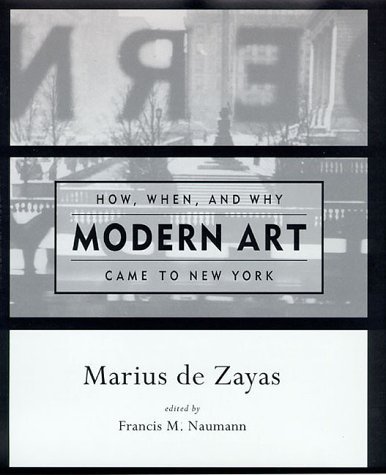The MIT Press
1 total work
Marius de Zayas (1880-1961), a Mexican artist and writer whose caricatures of New York's theatre, dance and social elite brought him to the attention of Alfred Stieglitz and his circle at "291", was among the most effective propagandists of modern art during the early years of the 20th century. His writings were the first to provide the American public with an intellectual basis upon which to understand and eventually appreciate the newest artistic developments. "How, When and Why Modern Art Came to New York", originally written in the late 1940s, is a chronicle assembled from de Zaya's personal archive of photographs and from newspaper reviews of the exhibitions he discusses, beginning with those held at the Stieglitz gallery and including important shows mounted in his own galleries: The Modern Gallery (1915-1918) and The de Zayas Gallery (1919-1921). An appendix added by the editor provides detailed information on the various exhibitions.
Additional appendixes contain transcriptions of the de Zayas and Stieglitz correspondence, as well as an account of de Zayas's unique relationship with Picasso, a Spaniard with whom he felt a special kinship and whose work he would be among the first in America to promote and defend. Among the press reviews included here are many important documents coming to light for the first time since their original publication. Moreover, the photographs de Zayas selected specify which works were shown in the exhibitions he discusses (as opposed to vague titles in catalogue listings), and many of the photographs illustrate works that have been lost or destroyed since they were first shown.
Additional appendixes contain transcriptions of the de Zayas and Stieglitz correspondence, as well as an account of de Zayas's unique relationship with Picasso, a Spaniard with whom he felt a special kinship and whose work he would be among the first in America to promote and defend. Among the press reviews included here are many important documents coming to light for the first time since their original publication. Moreover, the photographs de Zayas selected specify which works were shown in the exhibitions he discusses (as opposed to vague titles in catalogue listings), and many of the photographs illustrate works that have been lost or destroyed since they were first shown.
